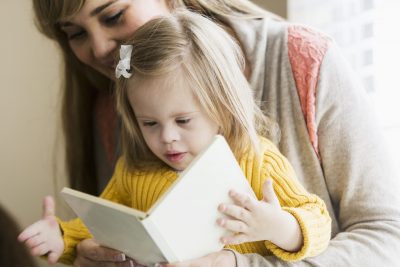| Designing Environments |
Learn about features of the physical and social classroom environment that maximize young children's engagement and learning. |
4:47 |
View |
| Getting Kids Involved: Creating Opportunities for Learning |
This video introduces and illustrates many ways that adaptations can be used to promote the active participation of infants, toddlers, and preschoolers in everyday literacy activities. You will see examples of adaptations in-home and classroom environments, activities, materials, and/or instructions. |
12:13 |
View |
| Getting the Right Size: UDL |
Using a shoe store analogy, this short video by OCALI provides an overview of Universal Design for Learning. |
2:22 |
View |
| Jenni’s Story |
This vignette illustrates how a physical therapist worked with the entire family to address the family’s goal that two-and-a-half-year-old Jenni walks independently. |
8:12 |
View |
| Making Sense of Universal Design for Learning |
This video provides a rationale for UDL, discusses the principles of UDL, and identifies aspects of the curriculum and environment to be addressed. |
3:52 |
View |
| Nolan’s Story |
This vignette illustrates how a physical therapist worked with the family using low-tech adaptations and household items to make bath time a fun, social, and enriching experience for almost three-year-old Nolan and his entire family. |
6:28 |
View |
| UDL to Change the World |
UDL practitioners from across the world briefly discuss how they use the Universal Design for Learning framework to empower all learners, including themselves. |
1:03 |
View |
| An Inclusion Story |
What "inclusive services" mean and can look like for a young child with a disability and his family are discussed. Strategies for providing coordinated, comprehensive, family-centered services through their partnerships with families, early care and education, early intervention, and other community partners in their own programs and communities are identified. |
26:14 |
View |
| Creating Bright Futures |
This video highlights the SpecialQuest vision for including infants and toddlers with disabilities and their families in early care and education programs with early intervention and other community supports. Families' and service providers' perspectives on inclusion are discussed. |
11:20 |
View |
| Getting Started |
This video offers a story of one program that includes a young child named Jalisa in an early care and education setting. The video offers specific examples of how to plan for this inclusion across a variety of roles. |
23:12 |
View |
| Preschool Inclusion: Working Together to Make It Happen |
Provides the rationale for inclusion from the perspective of professionals and families. Benefits for the classroom staff and children are discussed. |
18:09 |
View |
| Preschool Inclusion: Samantha |
Aspects of successful inclusion of Samantha in a Head Start preschool classroom are discussed. Her Dad, speaking Spanish, discusses his goals for Samantha in this inclusive preschool. |
10:14 |
View |
| Preschool Inclusion: Drew |
The array of resources needed to support the inclusion of a child with a disability are identified. Through the story of Drew's family, viewers also consider the influence of a parent's own disability on the collaborative process of inclusion. |
6:07 |
View |
